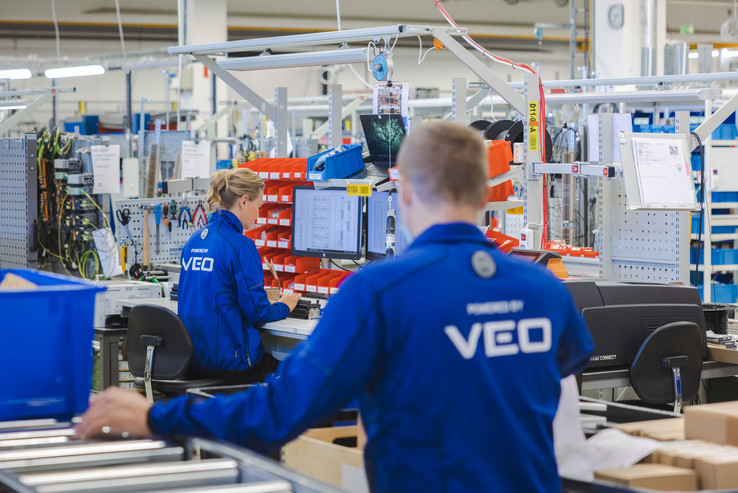VEO Oy's versatile project planning relies on the flexibility of database-driven EPLAN for electrical planning
"The database-driven nature of EPLAN is one of the main reasons. It allows changes made in one place to be immediately visible to all users, so that documentation remains consistent everywhere. In addition, the software's intelligence in automating tasks allows designers to focus on project tasks, increasing overall efficiency."

VEO Oy:n toimintaa Vaasassa, EPLAN-ohjelmistot käytössä VEO:n sähkösuunnittelussa
Choice of design software
VEO Oy is a Finnish company specialising in electrification and automation, providing complete solutions for the energy and industrial sectors. The company specialises in the design, production and commissioning of electrical systems and automation solutions.
VEO is particularly known for its expertise in renewable energy projects, such as the electrification of hydroelectric and wind power systems. The company is headquartered in Vaasa, Finland, and has five offices in Finland, Sweden, Norway and the UK. VEO employs more than 500 people, 260 of whom work in engineering positions. The company has an extensive portfolio of modular product families that can be tailored to customer needs.
VEO has been using EPLAN software solutions for design for many years and they are used in electrical design in all segments. When interviewed about the importance and benefits of the software, Matias Puska, Eplan-key-user from VEO Oy, was the first to mention the international environment. "The database-driven nature of EPLAN is one of the main reasons. It allows changes made in one place to be immediately visible to all users, keeping documentation consistent everywhere. In addition, the software's intelligence in automating tasks allows designers to focus on project tasks, increasing overall efficiency."
Use and development of EPLAN
VEO uses EPLAN Electric P8 electrical design software and ProPanel 3D layout software with routing capabilities. When the software is used by multiple designers in different locations, managing access rights helps with rights assignment and the creation of new parts and projects can be centralised, which maintains high quality, summarises Puska. The EPLAN Data Portal, an online component library, is also in use, with circuit diagram representations of components to support fast, high-quality design. VEO's design team finds the usability of the EPLAN software logical and easy to adopt.
Important benefits for VEO:
"When working on a transnational design project in one project, working with one database base helps to manage the whole project," says Puska. Another cumulative benefit is the use of EPLAN macros, ready-made circuit diagram clips. Creating macro libraries streamlines the design process, which speeds up the start of new projects. Standardised macros ensure consistent documentation, simplifying daily design work and speeding up the overall process.
When asked about the critical aspects of the design process and the role of EPLAN software in this context, Puska's response highlights the ease of use of the software and its database-driven nature. "In almost every project for various reasons, we will have something specialized to edit, for example, the report or template base, or the drawing style in general. These assignments can usually be solved easily because of the flexibility of the software." Puska continues, "The flow of information from design to production is also good, as interfaces to printers and automatically generated reports improve efficiency."
Future development plans:
In terms of future opportunities with EPLAN, VEO sees the expansion of the 3D layout environment as a first possible step. In recent years, EPLAN cloud solutions have become more and more available and these are attracting interest for the redlining of design documentation and the possibility to comment changes directly from the field. Puska also responds that the expansion of configuration tools and interface solutions are potential areas to be explored in the future.

